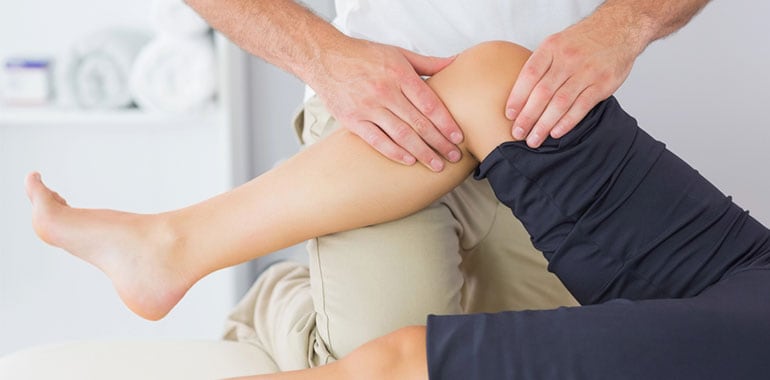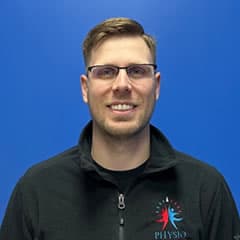Anterior Cruciate Ligament (ACL) injuries require careful management, whether the individual undergoes surgical reconstruction or opts for non-surgical rehabilitation. This blog outlines a comprehensive physiotherapy protocol for both scenarios, detailing each phase of recovery, associated goals, and recommended exercises.
Pre-Operative Rehabilitation (For Surgical Candidates)
**Goals:**
- Restore full range of motion (ROM) equal to the uninjured knee
- Minimize joint swelling
- Increase strength and neuromuscular control
- Maintain a positive mental state
**Exercise Suggestions:**
- Strength training for quadriceps and hamstrings
- Proprioceptive exercises like balance training
- Cardiovascular exercises such as cycling or swimming to maintain fitness
Non-Surgical ACL Rehabilitation (Initial Phase)
**Goals:**
- Reduce pain and swelling
- Restore full ROM
- Strengthen surrounding muscles to compensate for ligament deficiency
- Enhance proprioception and balance
**Exercise Suggestions:**
- Quadriceps and hamstring strengthening exercises
- Balance and proprioception training on stable and unstable surfaces
- Cardiovascular fitness through low-impact activities like cycling and swimming
0-2 Weeks Post-Op (For Surgical Candidates)
**Goals:**
- Decrease pain and swelling
- Achieve full knee extension
- Activate quadriceps muscles
- Maintain flexibility and cardiovascular fitness
**Exercise Suggestions:**
- Heel slides and leg wall slides for ROM
- Quadriceps isometrics and co-contractions
- Seated and standing calf stretches
- Static lunges and mini wall squats
- Single leg stance for proprioception
3-6 Weeks Post-Op / Non-Surgical ACL Rehabilitation (Intermediate Phase)
**Goals:**
- Achieve near full ROM in knee flexion and extension
- Strengthen hip, hamstrings, quadriceps, and calves
- Normalize weight-bearing gait
- Maintain cardiovascular fitness
**Exercise Suggestions:**
- Prone knee flexion and seated calf stretches
- Sit-to-stand exercises with muscle stimulation
- Step-ups and wall squats
- Single-leg stance on unstable surfaces
- Bike and elliptical training
6-9 Weeks Post-Op / Non-Surgical ACL Rehabilitation (Advanced Phase)
**Goals:**
- Full and pain-free knee ROM
- Functional quadriceps strength
- Advanced proprioception exercises
- Increased cardiovascular fitness
**Exercise Suggestions:**
- Terminal extension with tubing
- Shuttle exercises for squats and calf raises
- Lunging with Bungee cords
- Step-ups and eccentric lateral step downs
- Proprioception exercises with wobble boards and BOSU
9-12 Weeks Post-Op / Non-Surgical ACL Rehabilitation (Progressive Strengthening Phase)
**Goals:**
- Continue flexibility exercises
- Strengthen quadriceps and hamstrings through full and inner range
- Proprioception progression
- Sport-specific cardiovascular fitness
**Exercise Suggestions:**
- Dynamic lunges and backward step-ups
- Clock face lunges with Bungee
- Quick side stepping and lunges
- Eccentric step downs and Shuttle jumping
- Single-leg balance exercises
12-16 Weeks Post-Op / Non-Surgical ACL Rehabilitation (Functional Training Phase)
**Goals:**
- Sport-specific lower chain strengthening
- Proprioception training
- Cardiovascular fitness tailored to sport
**Exercise Suggestions:**
- Full-range concentric and eccentric strengthening
- Agility drills like ladder drills, skipping, and hop tests
- Plyometrics including split squat jumps and single leg drop landing
- Sport-specific cardiovascular training
16-20 Weeks Post-Op / Non-Surgical ACL Rehabilitation (Performance Phase)
**Goals:**
- Plyometrics and agility training
- Advanced proprioception exercises
- Maintain cardiovascular fitness
**Exercise Suggestions:**
- Single leg and crossover patterns in ladder drills
- Vertical jumps and box hop up/down
- Forward and lateral hopping
- Running and sprinting drills
20-24 Weeks Post-Op / Non-Surgical ACL Rehabilitation (Return to Activity Phase)
**Goals:**
- Achieve cardiovascular fitness, strength, power, and agility
- Prepare for return to sport
**Exercise Suggestions:**
- Single leg drop jump and large figure 8 drills
- Carioca running and last-minute decision drills
- Single limb hop tests
- Cycling, swimming, and outdoor running
Return to Sport (For Both Surgical and Non-Surgical Rehabilitation)
Gradual return to sport activities can begin around the 6-9 month mark, provided there is no pain or swelling, and LEFS scores are 76 points or greater. The individual must demonstrate adequate strength and endurance specific to their sport.
**Key Considerations:**
- Avoid using the uninjured limb as a sole comparison for progress
- Ensure symmetrical strength and functional abilities
- Engage in sport-specific training under supervision
By following this detailed protocol, individuals recovering from an ACL injury—whether surgically or non-surgically—can achieve optimal outcomes and safely return to their desired level of activity. Remember, each person's recovery journey is unique, and rehabilitation should be tailored to meet individual needs and progress.



